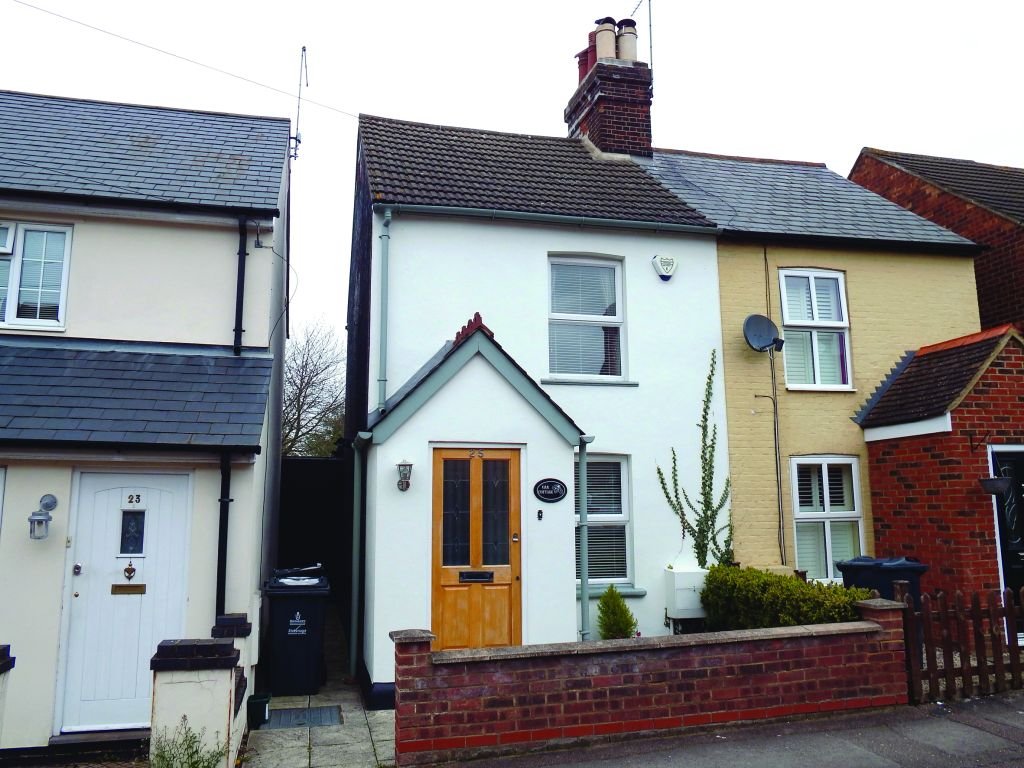Leaving London: Is moving out of the Big Smoke good value for money? The pros and cons

With London homes so expensive, more people than ever are thinking of escaping to the country. But is it all it’s cracked up to be? We’ve teamed up with the help of property agent Savills to challenge the assumption that you’ll get better value for your money buying outside the capital.
For some, the move may be the only way to find an affordable home. Others, already on the housing ladder, may decide that lifestyle choices – such as a bigger garden for growing kids – will dictate their move outwards. And some Londoners, having enjoyed substantial house price inflation, are cashing in and moving to a much larger home for the same, or less, money in the countryside.
“You have a whole host of commuters who are prepared to make that trade-off,” says Lucian Cook, director of residential research at Savills. Quality of life needs to be set against travel time and lower house prices. Cook says there will be other drivers over the coming months, as interest rates rise, and the impact of the Mortgage Market Review is felt; the latter is already blamed for dampening mortgage demand, and could force some existing borrowers to downsize.
One consideration must be how property prices will fare. “You’ve seen a period where the London market performed significantly better,” says Cook. “I suspect we’ve reached a point where the commuter zone will see some uplift.” Currently, the best value locations appear to be along three commuter lines all heading out of King’s Cross, with both northern and southern options.
For those seeking a commute of less than half an hour, Savills suggests a look at Stevenage and Luton. An average house sale price in Stevenage was £225,000 in 2014, where it will take you 24 minutes to arrive at King’s Cross. Luton homes averaged £181,500 last year, and there is a choice of Luton or Luton Airport Parkway stations, two minutes apart on the train line. A season ticket from any three of these stations will set you back close to £5,000 a year.
Further up the line from Stevenage is Arlesey, where a 36 minute commute will cost you over £5,100 a year, and local homes average £188,502. And it will be a crowded platform, as 44 per cent of station users are season ticket holders.
If you are willing to trade a longer commute for a better value home, Savills suggests Wellingborough. This is a popular home for many City workers, with 52 per cent of station users making the daily 45 minute trip using a season ticket costing £6,708 a year. The trade-off comes in the form of lower house prices, which averaged £162,000 last year.
Perhaps you’re happy with a longer sojourn on the train, confident of a seat and ready to use the time productively. In that case, Peterborough or Kettering might fit the bill. Peterborough is 50 minutes from King’s Cross, on the Newark line, and will set you back £7,894 a year for the commute, But homes here average a great value of £152,000.
Alternatively, there’s Peterborough’s western neighbour, Kettering, which will cost you less for the 53 minute commute, at £7,376, but does have slightly more expensive homes at an average £156,500. It’s very much a commuter town, with 43 per cent of train users holding a season ticket, but smaller in scale than its easterly neighbour.
If you prefer the Kent countryside, Savills has come up with two good value alternatives, which rank alongside their northerly alternatives for value. Chatham is a 37 minute journey away from St Pancras and is a popular commute, with more than half of travellers from the station using season tickets, which set them back £4,532 a year. Homes here averaged £185,000 last year. Alternatively, Gillingham offers even better value. The 42 minute commute costs the same as the trip from Chatham, and homes here can be had for an average £173,000.
Looking ahead, there are several key rail developments that promise to reshape the commuting landscape. By 2018, the Thameslink line upgrade will be completed, providing more commuter capacity with longer, more frequent trains on lines running from Peterborough and Cambridge in the north, to Brighton in the south, passing under central London.
Crossrail, due in 2019, will offer a direct train under central London, linking to Reading in the west, Shenfield to the north east and Abbey Wood to the south east. That means no need to change trains for a commute from Reading to Farringdon, or Shenfield to Paddington – a considerable saving in time and hassle. For the pioneers, there’s still plenty of time to cash-in along these lines; Cook says house prices tend to react only after new services go live. The bottom line is: if you’re thinking of heading to the country, don’t fall for cheap house prices if you can’t stomach the commute.
PRIVATE VIEW: HOMES IN TOP COMMUTER HOTSPOTS

HISTORIC DOCK YARD, CHATHAM From £300,000
Situated in the Historic Chatham Dock Yard, this family home is a 19m walk from Chatham station. The second floor has four bedrooms.

ALLEYNS ROAD, STEVENAGE £279,995
An extended two bedroom semi-detached Victorian cottage situated within the popular Old Town that’s an 18m walk away from the station, with a garden and wooden summer house.

ST ANNES, LUTON £224,995
This three bedroom family home is a 15m walk away from Luton station. The garden backs on to the grounds of a Water Tower offering pleasant open views.